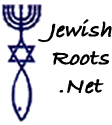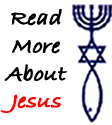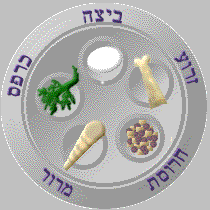






![]()
Bitter Herbs |
Haroseth |
Shank Bone |
Roasted or Hardboiled Egg |
Hours d'oeuvre |
 The Seder plate went through many changes before it came to
its resting place today. The menu was modified, and the symbolic meaning of
some of the foods changed. After the destruction of the Temple in A.D. 70, the
Seder plate became the primary way to celebrate the Passover holiday. A book known as the
Haggadah, (there are several different versions) was written to help us learn our way around the Seder plate and to help
with the retelling of the Exodus story. These two items, the Haggadah and Seder
plate, are still the most common examples used to retell the Exodus story today.
The Seder plate went through many changes before it came to
its resting place today. The menu was modified, and the symbolic meaning of
some of the foods changed. After the destruction of the Temple in A.D. 70, the
Seder plate became the primary way to celebrate the Passover holiday. A book known as the
Haggadah, (there are several different versions) was written to help us learn our way around the Seder plate and to help
with the retelling of the Exodus story. These two items, the Haggadah and Seder
plate, are still the most common examples used to retell the Exodus story today.
For believers in Jesus as the Messiah, there are Messianic versions of the Haggadah.
Items in Seder Plate image are in clockwise description starting with 12 o'clock; Hard boiled Egg; Shank Bone; Haroseth; Bitter Herbs and Karpus. Some Passover Seder plates will have a specific place for each item. Otherwise there is no order to the food on the plate since the order of eating the food comes from the Passover story itself when reading from the Haggadah.
 1) - Bitter Herbs (Maror):
1) - Bitter Herbs (Maror):Sometimes a herb like romaine lettuce is used. It was dipped in vinegar or red wine. This may have been a reenactment of the biblical account of the dipping of the Hyssop in the blood of the Passover Lamb and smearing the blood on the doorpost of the Jewish home. Sometimes the herbs are very bitter. You may also find small pieces of a bitter tasting root. Horseradish is common too. The bitter taste is to remind us of the bitter lives our ancestors had as slaves.
This is a mixture of crushed nuts, apples, cinnamon and
honey. It symbolizes the clay or mortar the slaves used to build
Pharaoh's buildings (Pesachim 116a). Surprisingly, it tastes good. Its sweetness is
said to represent the promise of a better world.
This represents the Paschal Lamb and
the miracle of God passing over Jewish homes while the first born of the
Egyptians were slain. The shank bone is a reminder that God brought us forth with
an outstretched arm. The bone reminds us of God's arm.

Some consider this a symbol of the animal sacrifices brought to the temple. Others feel it represents both past tragedies and rebirth. The egg may have been added to the plate because of Roman culture that sometimes worked its way into Jewish thought.
 5) - Karpus (Greek For Hors d'oeuvre):
5) - Karpus (Greek For Hors d'oeuvre):These are fresh greens such as parsley, celery, or lettuce. Sometimes even potatoes or radishes are used. It symbolizes the coming spring and the undernourishment of the slaves. It is also a symbol of a new life for the Jewish people when they were freed from bondage. The karpus is dipped in salt water, which represents the tears of the slaves.
Learn more about the Holiday Of Passover.